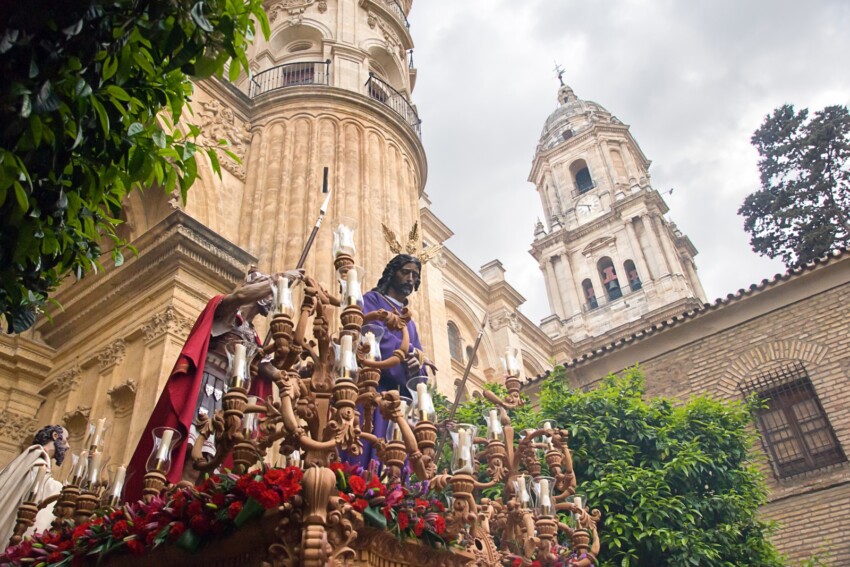

The variety of climates and landscapes in Spain means that it is possible to visit this country in every season. There is absolutely no best time to go to Spain: it depends a lot on the type of holiday you have to take, and the same goes for the location you stay in.
In general, keep in mind that in the south and in inland cities such as Madrid the summer is scorching, so seasons such as spring and autumn are preferable for these destinations. The Balearic Islands and even more so the Canary Islands have a mild climate all year round, while the northern regions are humid and rainy, with little difference in temperature between summer and winter.
More information on the climate in Spain, which will help you choose when to go, can be found on the Spain Weather page. Below are some tips on the best times to visit this fantastic country based on different types of holidays and the most important traditional events and festivals.
For many tourists, Spain is synonymous with sun and sea, and in fact, with its thousands of kilometres of coastline, this country is an ideal destination for those who want a comfortable, fully serviced beach holiday, as well as for those who like to be surrounded by greenery and are looking for secluded coves and wild beaches.
The Canary Islands with their subtropical climate guarantee sunshine and good temperatures all year round; in the winter months the sea water (which here, remember, is ocean) may be too cold for swimming, but almost all hotels and holiday flats have a swimming pool.
The Balearic Islands have a different climate, Mediterranean rather than subtropical, so in winter they are more suited to those who want culture and walking rather than a typical beach and sea holiday. They are perfect for summer, as they are more breezy than other locations on the Spanish coast, and also suitable for a spring or autumn holiday.
In the south-east and even more so in the south, one can safely bathe in spring and until late autumn, while the summer is torrid, with very high temperatures and almost no rainfall. To visit Andalusia and sunbathe on the beaches of the Costa del Sol or the Costa Blanca around Valencia, the best months are May, June and September.
Spain’s most important cities, Madrid and Barcelona in the lead, but also Valencia and Bilbao, can be visited all year round. The amount of tourist attractions (historical, cultural and scenic), both outdoors and indoors, that these locations offer guarantees an exciting holiday regardless of the weather.
It must be said, however, that unlike the other three, Madrid does not enjoy the relief of the sea breeze during the summer, which makes it a hot and sultry city. To visit the capital, it is advisable, if possible, to avoid the height of summer and choose more temperate seasons; the same applies to the three pearls of Andalusia, Seville, Cordoba and Granada.
Going to Spain at Easter is an excellent idea if you want to get to know the more traditional and authentic soul of this fascinating country. It is a time charged with emotion in which you can experience a unique atmosphere that cannot be found elsewhere.
The celebrations of Holy Week are the most authentically Spanish traditional festivities, experienced with intensity and participation throughout the country, but in each locality they take on their own particularity dictated by local traditions, which blend religious sentiments and popular passion in an original way.
Among the most famous are the processions in Andalusia, especially Seville and Málaga, but those in Murcia, Toledo, Elche, Caceres and Valladolid are also very evocative.
New Year’s Eve in Spain is an exhilarating, bubbly and sometimes exaggerated celebration that lasts from the evening of the 31st until the late morning of the first day of the year. The vitality, energy and zest for fun typical of Spaniards is overwhelming and you are sure to have a good time, whichever location you choose.
The big party, however, is New Year’s Eve in Madrid with the festivities and the big fireworks display at Puerta del Sol. Tradition dictates eating twelve grapes, one for each bell toll that heralds the arrival of midnight; recent fashions suggest wearing a colourful wig.
Can’t go to Spain over Easter? Don’t worry, you haven’t missed the opportunity to attend exciting traditional festivities. Due to their originality and incredible popular participation, some have become events of international resonance and some have even been declared Unesco World Heritage Sites.
Perhaps the most extravagant is the fiesta of San Fermín, which is held in Pamplona in July and completely transforms the city for nine days. The most famous moment of this festival is the adrenaline-fuelled running of the bulls: the inhabitants of the city, joined by the more adventurous tourists, run in front of a group of bulls set loose along a city route that ends at the bullfighting arena.
A must-see at least once in a lifetime is Las Fallas in Valencia, a popular festival of epic proportions that takes place in March. Its protagonists are hundreds of enormous satirical puppets scattered around the city that are burnt in a blaze of lights, music and fireworks.
For those who only have holidays in August, the event not to be missed is the Feria de Malaga, the great Andalusian summer festival, with food stalls in the streets, shows, music, fireworks, traditional costumes and parties that last until morning.
An original idea is to organise a holiday in Spain to coincide with a major event of interest to you. Maybe you are a motorbike fan and want to watch one of the most important trials of the MotoGP, or maybe you love cycling and want to watch exciting challenges… here are the main sporting events in Spain for those who want to organise a thematic holiday: